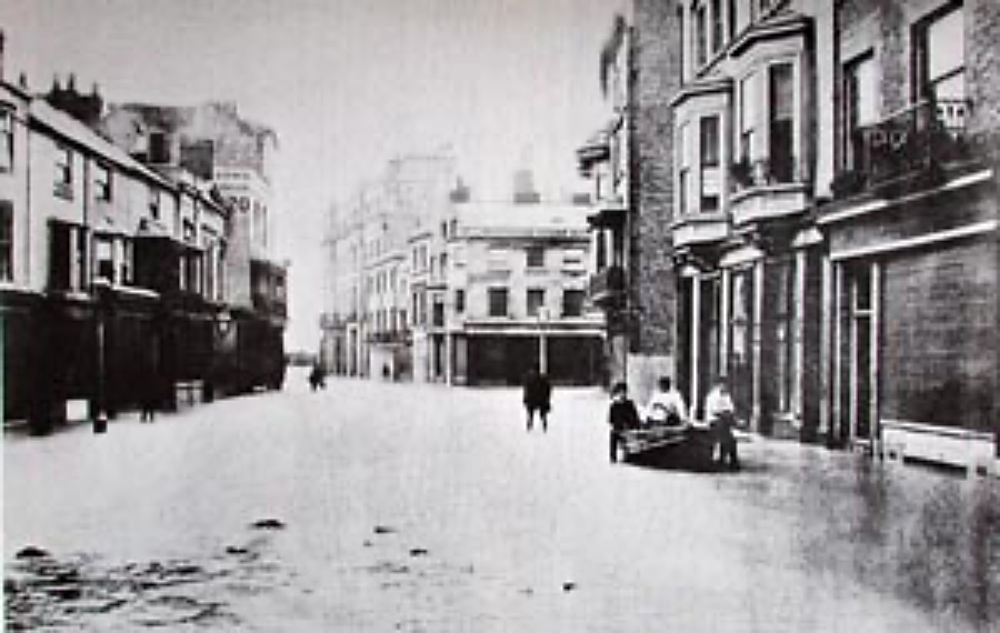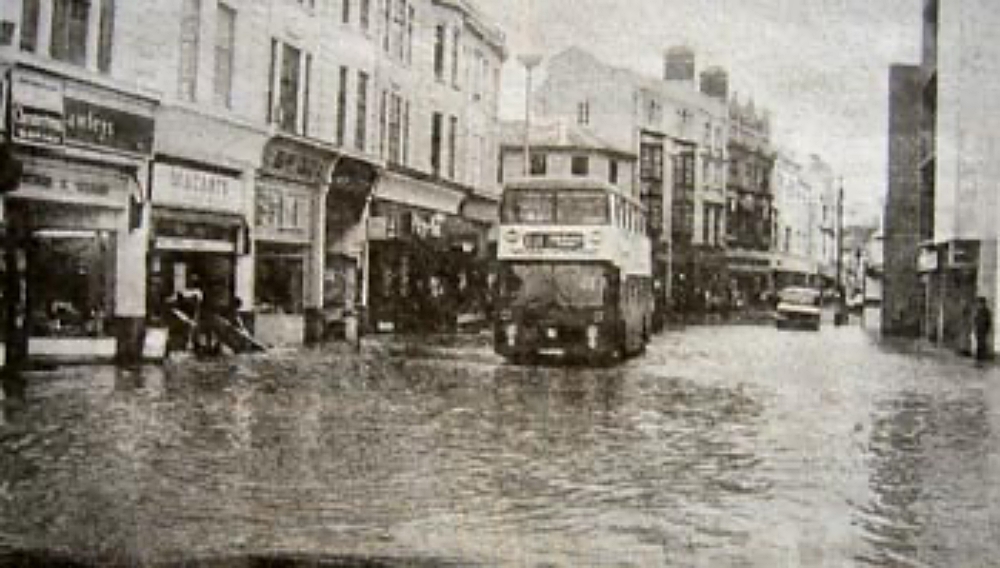Shoppers ferried when Worthing floods
FOR months, sometimes years, this part of West Sussex experiences above average weather conditions but then, from out of the blue, comes a ferocious storm that is remembered for decades.
Freddie Feest recalls the salutary lesson that Worthing learned when the unexpected happened in the week after Christmas, 1951.

THE sunshine and mild temperatures during that festive week in 1951 were uncannily similar to the fine weather we have just enjoyed, so those who have just made a new year resolution to keep a few sandbags handy in 2008 may not have been unduly apprehensive.
As the first day of 1952 dawned, gangs of workmen from Worthing Corporation’s borough engineer’s department were clearing away shingle and debris that had lashed Worthing in one of the worst storms for decades.
It followed a festive season of misleading sunshine and mild temperatures and had devastating results.
Streets, basements and gardens were flooded; roads became choked with timber that had been ripped from groynes on the seafront.
High waves scattered shingle, seaweed and bathing huts across the promenade and adjacent roadways, while notice boards were ripped from their mountings and blown for hundreds of yards.
That Saturday morning, it looked as though a hurricane had swept over the seafront between Wallace Avenue to the town boundary with Lancing.
Gaps had been torn in the sea defences and tons of shingle washed away, leaving the borough engineer to admit it was impossible to estimate the cost of the damage.
He could only hope, he said, that the shingle might return to the beach in the following weeks.
He was only surprised that so few windows had been damaged in the storm.
Next day, firemen from Worthing, East Preston and Southwick battled for hours to prevent the level of water rising in streets off the seafront.
Fire chief Jones said that he had never dealt with anything like it during all his 24 years of service in the fire brigade.
His men were called out after huge waves, crashing over the promenade, sent seawater coursing along Marine Parade from Splash Point to the west side of the pier, up South Street to the junction with Montague Street and into Warwick Road for a distance of 100 yards.
In Warwick Road, the water was soon three feet deep in many places. It streamed into basement flats and flooded some to a depth of four feet.
As furniture began floating around rooms, firemen started pumping out the water.
Mrs Elizabeth Seel had never seen anything like it during her 20 years as a local resident.
As they worked, firemen were kept supplied with jugs of hot tea by grateful homeowners.
In South Street, water was more than two feet deep in many places, while on the seafront, water poured into the basement of the Eardley Hotel for the first time.
Firemen looked more like seamen as they lashed their hoses to pillars on the promenade to prevent them being washed away by the crashing waves.
At one time, more than 1,000 feet of hose – nearly the whole of Worthing’s reserve – was being used for pumping water back into the sea.
Many seafront lights failed at the height of the battle with the elements and men worked with the aid of torches and the headlights of fire engines.
By 3am, when the inrush of water began to subside, well over a quarter-of-a-million gallons had already been pumped back into the sea.
Soon after the sea began rising, fishermen and boatmen had rushed from their homes to make their craft safe.
In the teeth of 60 and 70mph winds, they manhandled their boats across the pebbles and attempted to rope them to lamp stands and shelters on the promenade.
Huge waves broke nine-inch-thick, cast-iron kicking plates forming part of the pier’s railings and lifted more than 50 pieces of decking around the Southern Pavilion.
While dancers were still enjoying an old-time evening at the Pier Pavilion, water was seeping into the cloakrooms beneath the entrance.
Near Western Place, parts of the promenade were undermined and at Grand Avenue 75 feet of sea wall caved in.

Bathing huts at this point were swirled around and smashed like matchboxes.
Seawater surged inland to swamp Peter Pan’s playground to stop just short of Beach House itself and putting greens disappeared under seawater in Denton Gardens.
The seafront Brighton Road as far as Lancing was choked with debris, as part of the dual-carriageway at the town boundary disappeared under five feet of shingle.
It took council workmen nearly 24 hours before it could be reopened to a single lane of traffic.